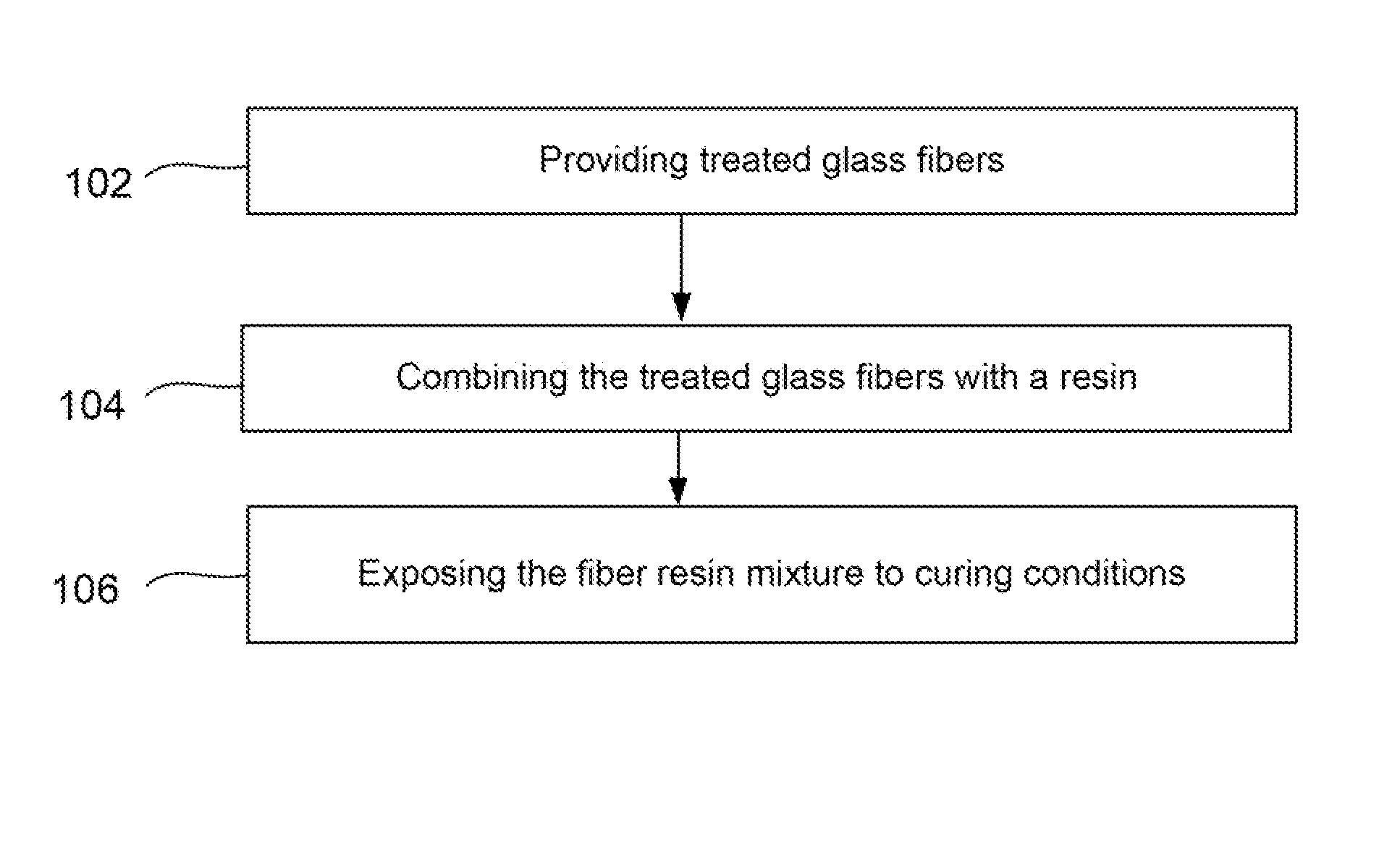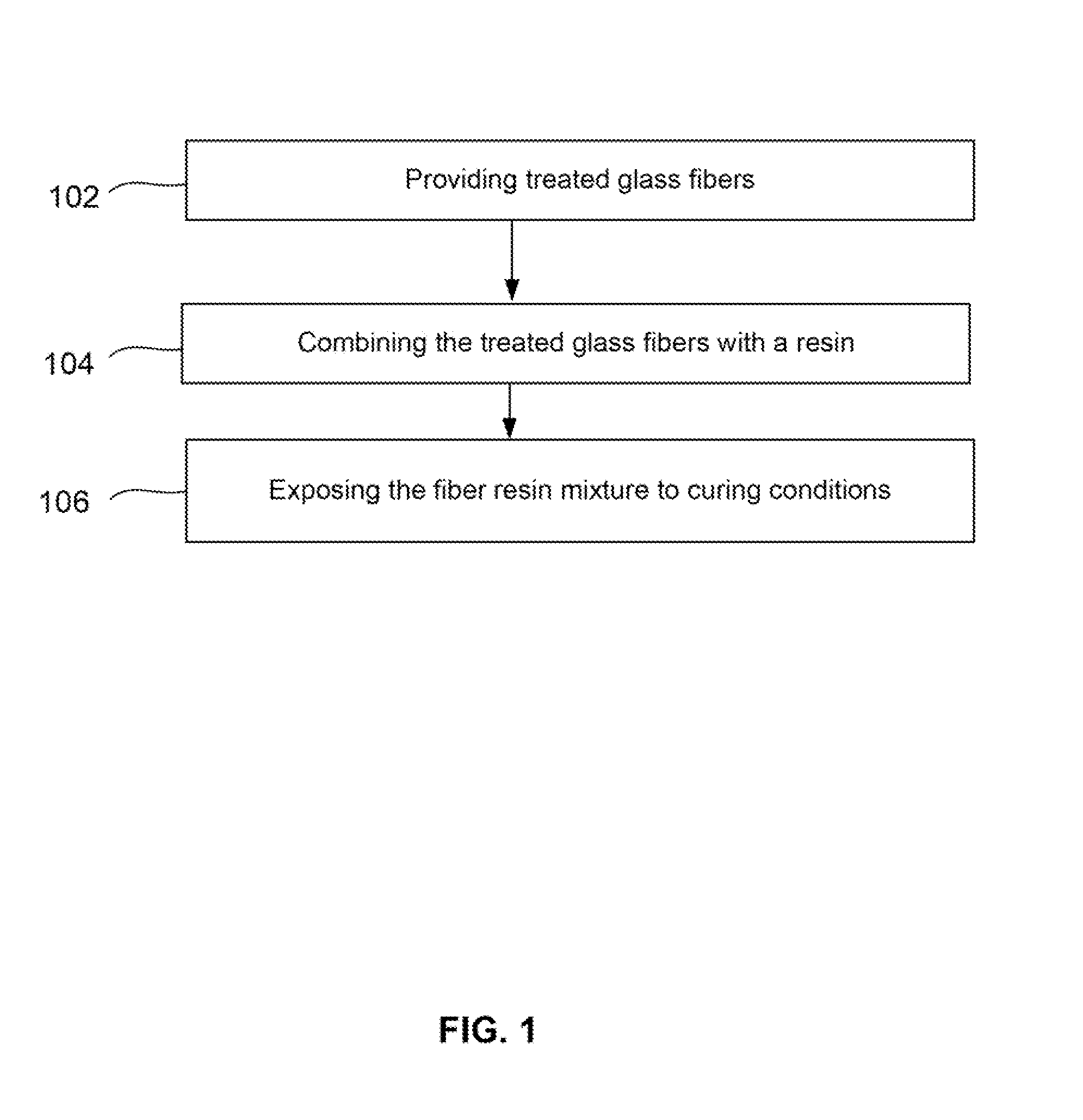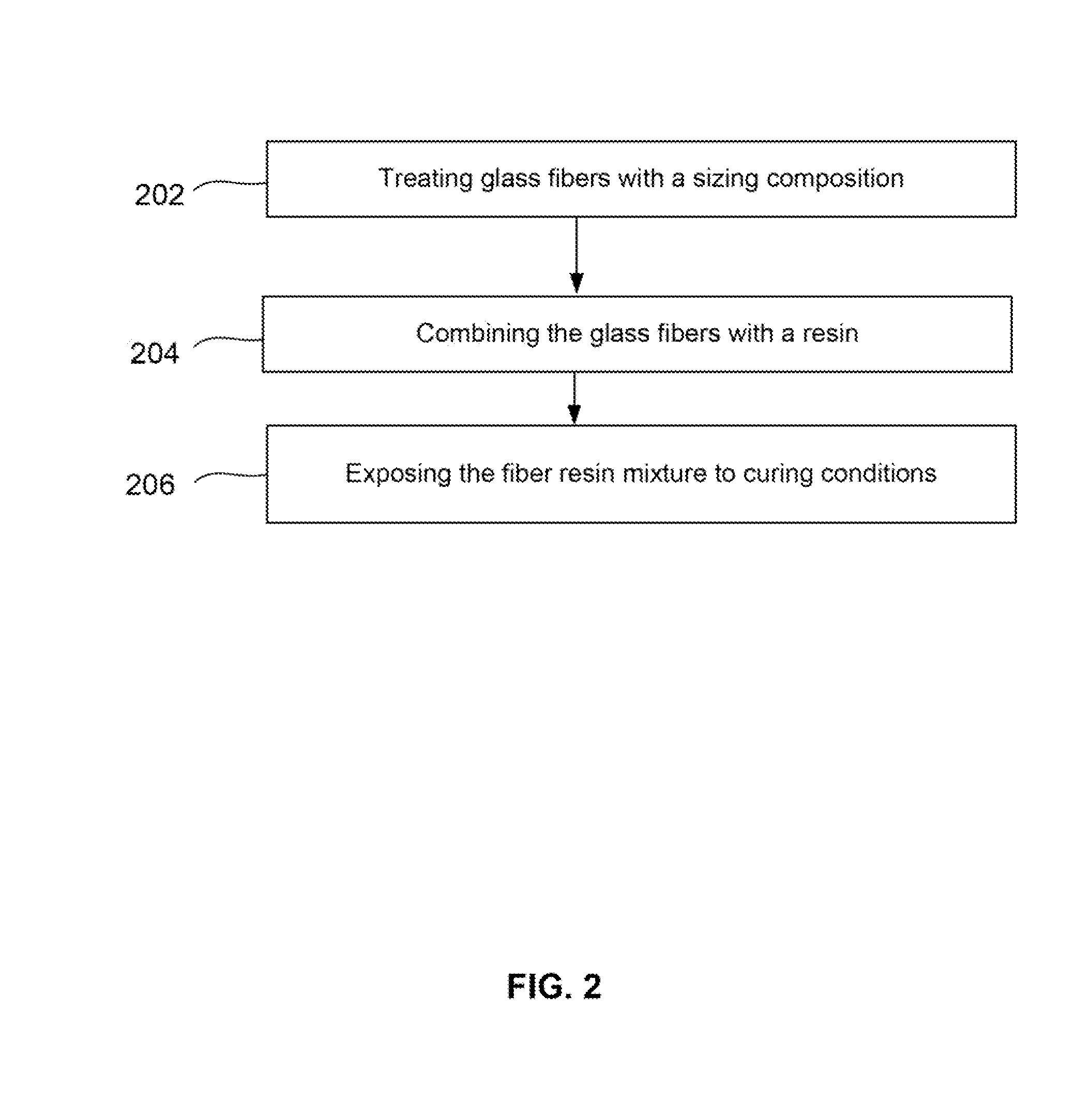Fiber reinforced composites made with coupling-activator treated fibers and activator containing reactive resin
a technology of reactive resin and fiber reinforced composites, which is applied in the field of fiber reinforced composites made, can solve the problems of reducing fracture toughness, reducing the strength of c-a compounds in the binder resin, and creating too many initiation points on the fiber surface, so as to improve the mechanical properties of the composite, increase the fiber content, and improve the effect of elasticity
- Summary
- Abstract
- Description
- Claims
- Application Information
AI Technical Summary
Benefits of technology
Problems solved by technology
Method used
Image
Examples
example 1
Preparation of Woven Fabric Reinforcement
[0045]1,200 tex fiber glass rovings, which were treated with a sizing formulation containing a coupling-activator, 2-oxo-N-(3-(triethoxysilyl)propyl)azepane-1-carboxamide, were weaved to form a unidirectional fabric with the area weight of 670 g / m2. A 6-layer 0 / 90° stack of the unidirectional woven fabric was then cut to 400 mm×400 mm and placed into the mold as reinforcement for the composite panel.
example 2
Preparation of Woven Fabric-Reinforced Polyamide-6 Composite Panels
[0046]Two heated tanks were used for melting caprolactam-catalyst and caprolactam-activator separately. An amount of 1,000 grams of caprolactam (Brüggemann, AP Nylon grade) and 82.4 grams of Bruggolen C10 (Brüggemann, contains 17-19% sodium caprolactamate) were added to the first tank. This mixture of caprolactam and C10 was melted at 100° C. Separately, 1,000 grams of caprolactam (Brüggemann, AP Nylon grade) and 9.0 grams of Bruggolen C20 (Brüggemann, contains 80% caprolactam hexane di-isocyanate) were added to the second tank. This mixture of caprolactam and C20 was melted at 100° C.
[0047]The melts from the two tanks were then mixed at a 1:1 ratio in a static mixer, before the reactive mixture was injected into the mold. The reactive mixture in this example contains 0.6 mol % of active catalyst (sodium caprolactamate) and 0.1% mol of active activator (caprolactam hexane di-isocyanate).
[0048]After the reactive mixtu...
PUM
| Property | Measurement | Unit |
|---|---|---|
| Fraction | aaaaa | aaaaa |
| Composition | aaaaa | aaaaa |
Abstract
Description
Claims
Application Information
 Login to View More
Login to View More - R&D
- Intellectual Property
- Life Sciences
- Materials
- Tech Scout
- Unparalleled Data Quality
- Higher Quality Content
- 60% Fewer Hallucinations
Browse by: Latest US Patents, China's latest patents, Technical Efficacy Thesaurus, Application Domain, Technology Topic, Popular Technical Reports.
© 2025 PatSnap. All rights reserved.Legal|Privacy policy|Modern Slavery Act Transparency Statement|Sitemap|About US| Contact US: help@patsnap.com



